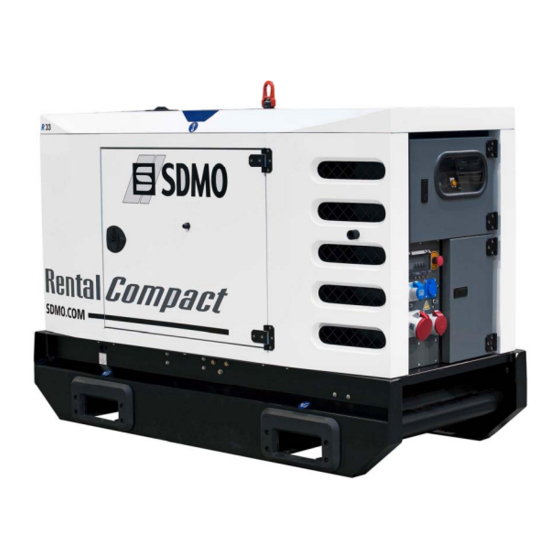
SDMO R33C3 Portable Generator Manuals
Manuals and User Guides for SDMO R33C3 Portable Generator. We have 1 SDMO R33C3 Portable Generator manual available for free PDF download: User And Maintenance Manual
SDMO R33C3 User And Maintenance Manual (244 pages)
Brand: SDMO
|
Category: Portable Generator
|
Size: 42 MB
Table of Contents
-
-
Preface6
-
Warnings6
-
-
Description17
-
-
-
-
Slings38
-
TT System41
-
Overvoltage50
-
Installation50
-
-
Starting75
-
Horn Reset83
-
Options90
-
Appendix
95 -
-
Limited Warranty101
-
Warranted Parts102
-
-
-
-
Keep Flames Away116
-
Wear Ear Plugs119
-
Service Battery121
-
Other Cautions122
-
-
Starter Switch131
-
Ammeter132
-
Hour Meter132
-
Stop Solenoid133
-
Thermo Switch134
-
-
Chapter 4 FUEL
142 -
-
Flash Point148
-
Insoluble148
-
Viscosity148
-
Water Content148
-
-
Genuine LLC150
-
Other Brand Llcs151
-
-
-
Fuel System159
-
Coolant - Change168
-
Cooling System168
-
-
-
Chapter 10
178 -
-
Work Safety180
-
Troubleshooting181
-
Output Decrease182
-
Overheating187
-
-
A.V.r.
219-
Supply220
-
R250 A.V.r221
-
-
Settings224
-
Spare Parts226
-
Designation226
-
-
-
R438 A.V.r.
231-
Supply232
-
R438 A.V.r234
-
-
Settings237
-
Spare Parts241
-
Designation241
-
-
Advertisement
Advertisement
